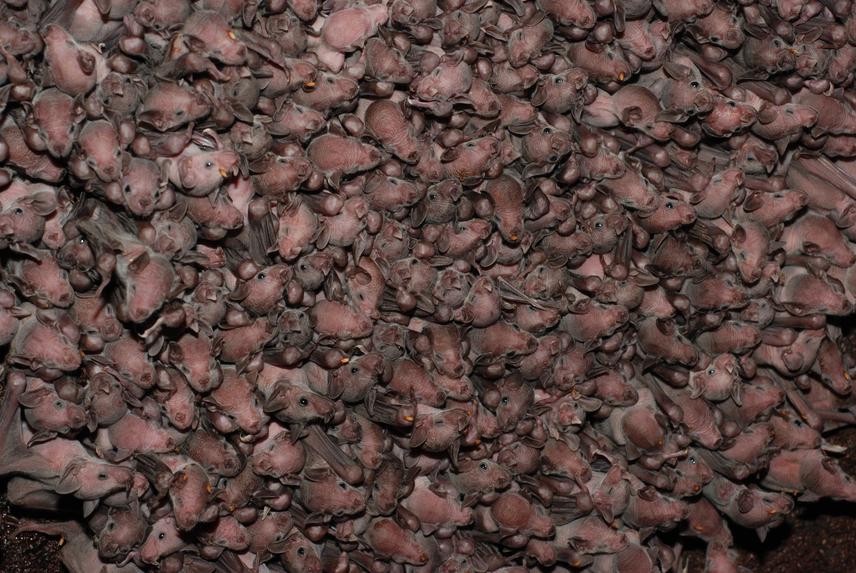Angelica Menchaca Rodriguez
I intend to compare gene expression of migratory vs non-migratory individuals to identify genes associated to migration. I will also analyse population structure to identify conservation units.

Baby bats.
Bats exemplify an extraordinary animal group characterized by a vast array of evolutionary innovation and variation. As a result of their dietary diversity they provide numerous services that have broad implications for the maintenance of the ecosystem. The evolution of flight allowed bats to exploit diverse niches; their capacity to adapt enabled them to become the second most diverse group of mammals. Some species of bats take part in one of the largest known mammal migration. This involves a diverse array of physiological and behavioural adaptations. Although migration is a survival phenomenon crucial for many species, the underlying mechanisms involving molecular and physiological adaptations remain largely unknown.
This project will study the genetic architecture of migration of the Lesser-long Nosed Bat (Leptonycteris yerbabuenae). This bat is an economically important species that is responsible of pollinating cacti and other plants along its migratory route. Some of these plants are used in the production of tequila and mezcal and their survival is strongly linked to this bat. Conserving animal migrations strengthens ecosystem resilience by providing sources for reorganization especially after disturbance, and serves as an opportunity for species to cope with climate change. Migration can vary substantially among populations and even individuals; it can change rapidly and is threaten by habitat modification, prey disappearance, poaching, barriers, and pollution. Conservation strategies for L. yerbabuenae and many other migratory species depend critically upon knowledge of connectivity of populations that may be separated geographically at different times of the year.
This project intends to answer key questions about the genetic basis of migration. It will generate molecular information of the underlying mechanisms that confer bats the capacity to achieve such a remarkable behaviour. Using a genomic approach we will compare migratory and resident individuals, study their gene expression, and search for intra-species variations. This approach could allow the identification of distinct conservation units and the best strategy to connect them. It will also allow understanding the intrinsic characteristics of the migratory behaviour and the environmental variables affecting it.